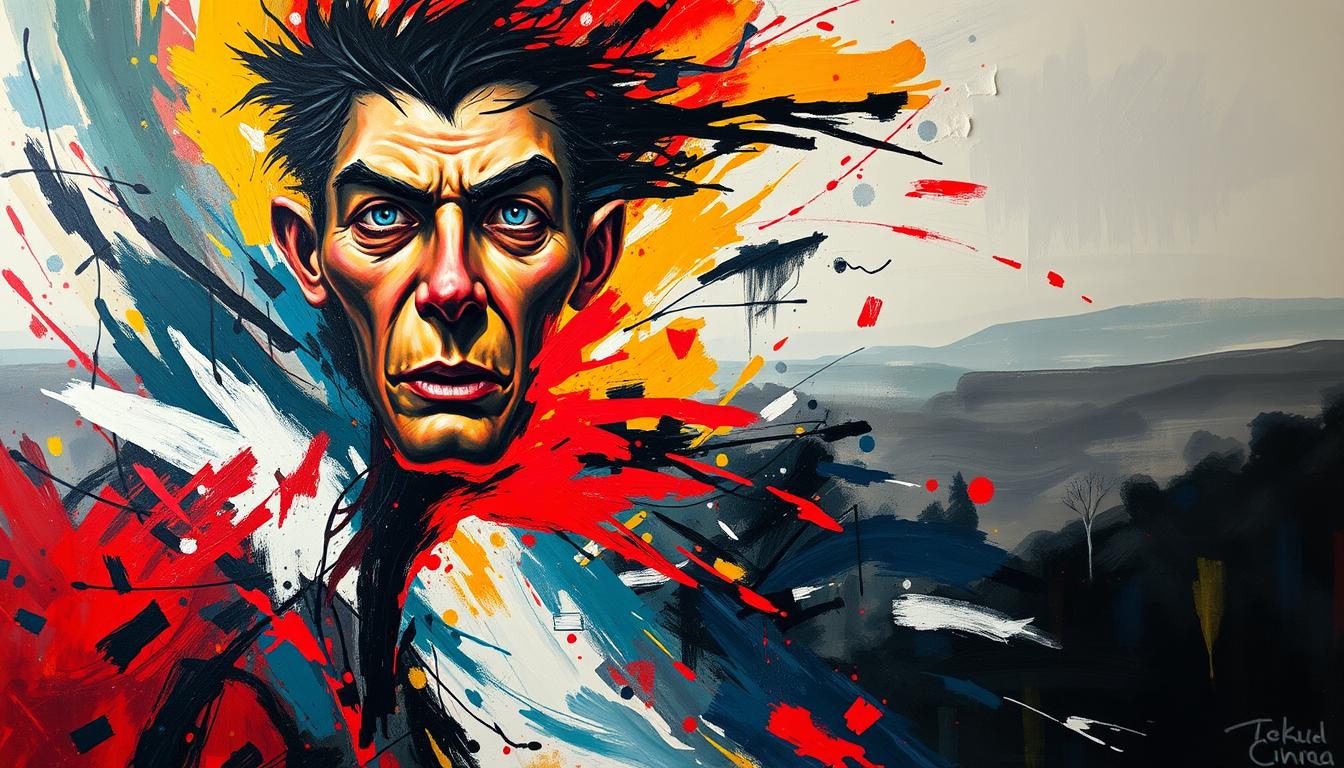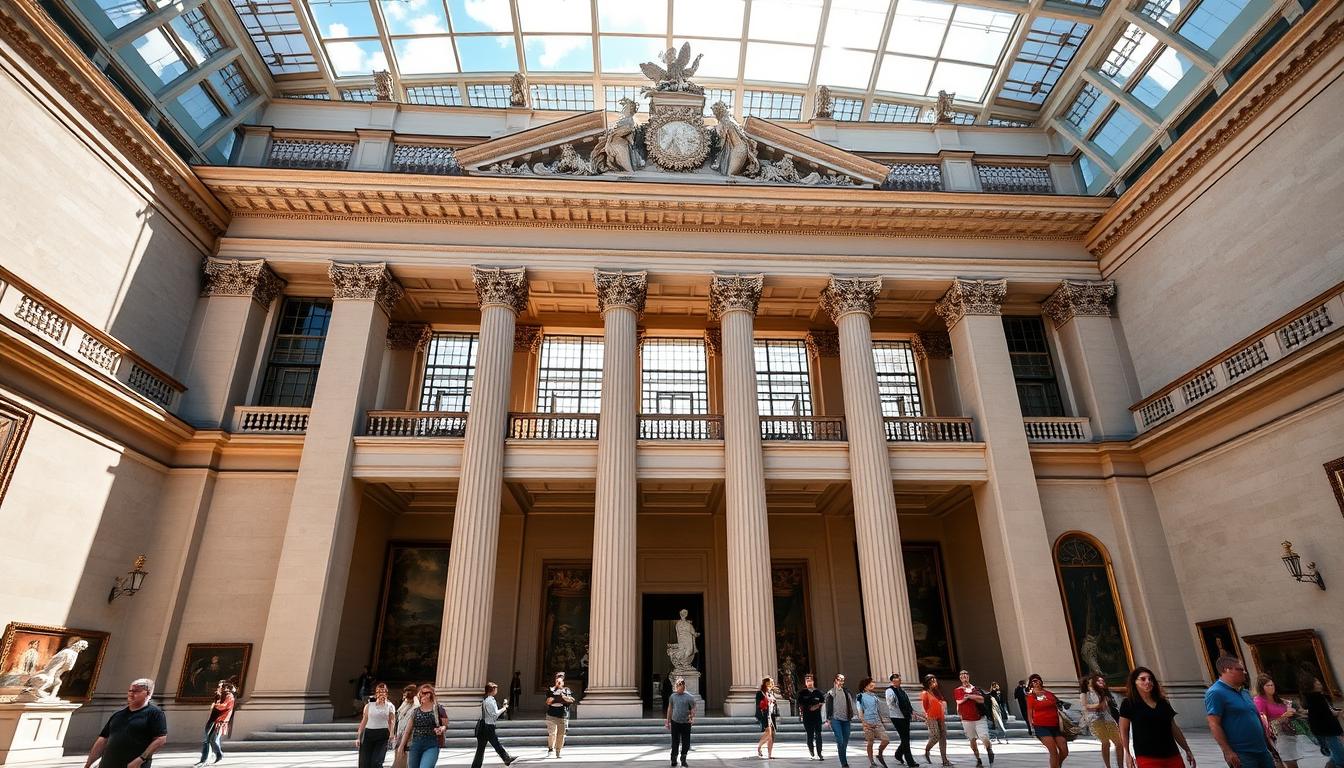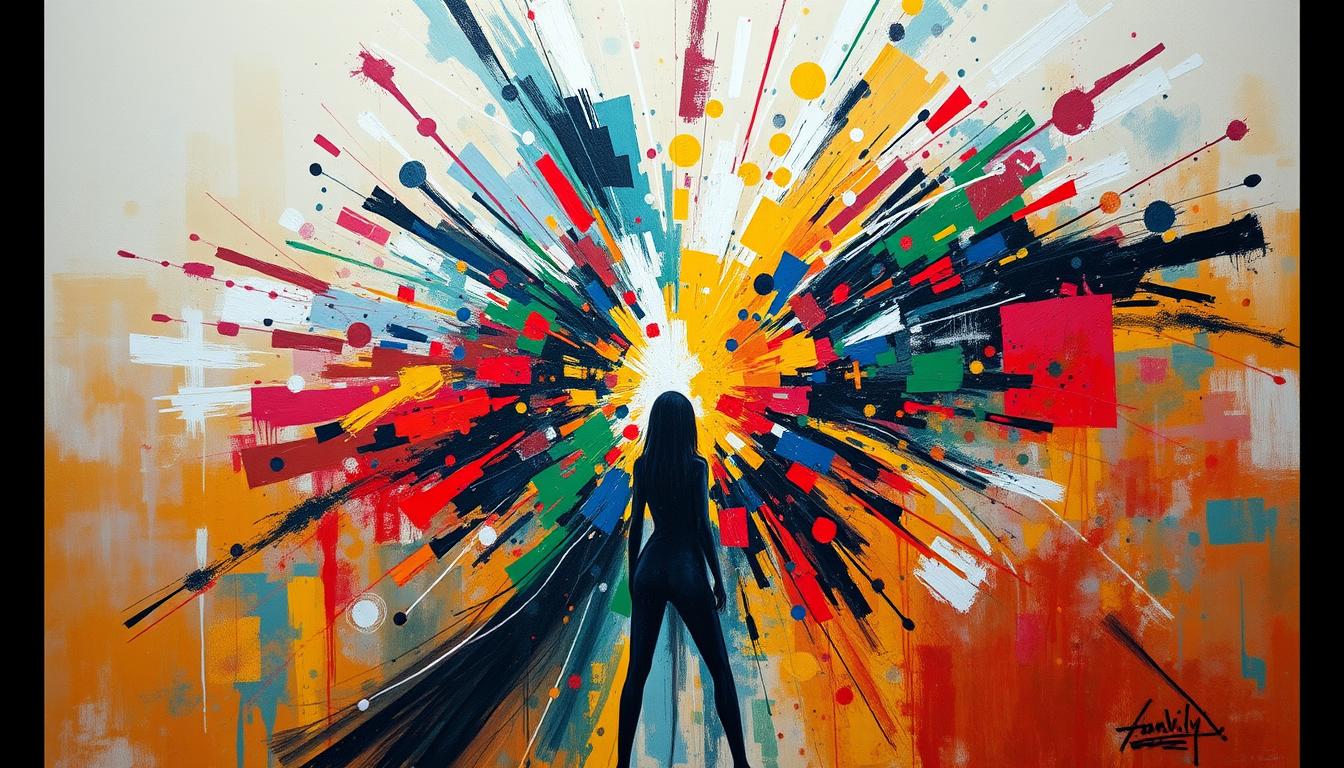Can a painting shout what words cannot? This question cuts to the heart of a bold modern style that flips representation into feeling.
Expressionism began as an early 20th-century revolt against strict realism. Artists such as Edvard Munch and James Ensor used vivid color, distorted forms, and raw brushwork to share inner life rather than a camera-like view.
That urge to prioritize mood over mimicry spread across the world. German avant-garde groups and the trauma of World War I pushed the movement into new media and sharp social commentary.
Today, those same tools—symbolic color, intense line, and charged gestures—help artists tackle identity, conflict, and mental health. Museums like MoMA helped bring German works to American audiences and shaped how the movement influenced later currents.

Key Takeaways
- Expressionism centers the artist's inner view over literal depiction.
- It rose from late 19th-century roots and grew through early 20th-century upheaval.
- Bold color and dynamic line are hallmarks that carry into today’s practices.
- Influence spans painting, sculpture, film, and design across the world.
- Knowing its history helps viewers read emotional and social messages in modern work.
Quick Definition and Why It Matters Today
Artists often bend reality to let feeling lead the image. This approach puts emotion at the center, so what you see reflects a personal view more than a mirror of life.
Clear, friendly definition
Expressionism art centers feeling first. The artist’s perception of reality shapes the scene. Viewers are invited to sense mood, not decode literal details.
Core traits and techniques
This style departs from realism. Expect distorted forms, bold contrasts, and energetic brushwork. Artists use symbolic color—acidic greens, blazing reds, deep blues—to push emotional impact.
- Distortion: shapes stretch to show inner states.
- Color: chosen for feeling, not accuracy.
- Mark-making: rough textures and fierce lines carry psychological weight.
These methods span painting, sculpture, prints, and posters. They help modern artists address trauma, alienation, and social critique. Recognizing these traits makes spotting expressionist qualities easier across times and media.
| Trait | How it's used | Effect on viewer |
|---|---|---|
| Distortion | Altered proportions and perspective | Creates discomfort or empathy |
| Symbolic Color | Non-natural hues to heighten mood | Guides emotional reading |
| Assertive Lines | Exaggerated contours and gestures | Amplifies urgency and tension |
From the 19th Century to the Early 20th: How the Movement Emerged
A sudden shift in tone and technique around 1900 set a new emotional vocabulary for painters across Europe.
Late 19th-century figures such as Edvard Munch and James Ensor pushed color and distortion to show anxiety and isolation. Their bold work made feeling the subject, not mere likeness.

Precursors and the German spark
In the early 20th period, German circles crystallized those ideas. Die Brücke artists channeled primitivism and urban energy into raw woodcuts and tense street scenes.
Der Blaue Reiter — led by Wassily Kandinsky and others — pursued spiritual color and abstraction that linked people and nature.
War, spread, and legacy
The First World War deepened themes of grief and fracture. Artists answered with distorted images that echoed a shaken era.
After 1918, exhibitions, prints, and journals helped the movement cross borders. It influenced Austria, Poland, and later reached the United States, shaping modern museum shows and new generations of artists.
Signature Artists and Works that Shaped the Movement
A few trailblazers turned modern anxiety into bold visual statements that still resonate. Their choices—crooked perspectives, harsh lines, and color as feeling—crafted a new expressive language.
Ernst Ludwig Kirchner and Die Brücke: streets, woodcuts, and anxiety
Ernst Ludwig Kirchner captured urban speed and inner strain in electric street scenes and raw woodcuts. His Winter Moonlit Night (1919) moves from city chaos to Alpine calm with a strange, blue serenity against a red sky.
Emil Nolde’s vivid color and emotionally charged figures and landscapes
Emil Nolde pushed color to the edge. His blazing palettes turn figures and landscapes into motion and mood, using pigment to carry emotional weight across canvases and prints.
Schiele, Kokoschka, and Munch: portraits, inner turmoil, and iconic imagery
Egon Schiele and Oskar Kokoschka made portraits that bare vulnerability. Edvard Munch’s The Scream remains a single artwork that sums up existential dread with unforgettable imagery.
- Spotlight: Kirchner’s city scenes and woodcuts pressed raw anxiety into memorable works.
- Group ethos: Die Brücke used carving and print for sharp social critique.
- Cross-media power: Painting, prints, and drawings spread expressive form and reach.
These expressionist artists shared a belief: inner states should reshape outward form. Look closely at edges, brushwork, and color breaks to see how feeling drives each painting and image.

The Visual Language: Techniques, Media, and Forms
Brushstrokes, gouges, and tilted planes act like a vocabulary for private experience made public. Expressionist techniques turn physical action into feeling. Marks become speech; color becomes mood.
Vigorous brushwork, exaggerated lines, and symbolic color
Vigorous brushwork gives painting a pulse. Short, repeated strokes can make a scene feel frantic. Long, slashing lines suggest anger or motion.
Symbolic color steers emotion. Acid greens can signal anxiety, while burning reds suggest danger or passion. These choices guide how viewers read a work.
Printmaking’s revival and cross-media influence
Woodcuts reintroduced tactile power. Gouged grooves and inky textures add rawness that prints carry into public view. Posters spread expressive ideas fast and widely.
Artists reshaped figures and landscape by stretching form and skewing perspective. The aim was to reveal interior truth rather than replicate reality.
- Look for motifs: tilted viewpoints, jagged contours, and slashing hatches.
- Cross-media play: carving, drawing, and painting inform each other and expand styles.
- Contemporary use: digital and analog tools adapt this toolkit to new works.
What is Expressionism in contemporary art? Themes, Artists, and Global Influence Today
Artists now treat screens and memories as an ever-present camera, shaping work that records feeling as much as fact. This lens helps artists probe trauma, exile, and social unease with urgent marks and color.
Present-day concerns: Siegfried Kracauer’s phrase captures how constant recording blurs life and imagery. Many creators use this overlap to explore alienation, conflict, and shared grief.
Legacy of early groups
Lines from die brücke and der blaue reiter still echo. The raw woodcut spirit of die brücke and the spiritual color of der blaue reiter inform pared-down abstraction and ritualized painting today.
Contemporary voices and regions
Artists such as Kateryna Lysovenko, Sana Shahmuradova Tanska, Margarita Dyushko, Irina Kotova, Roman Kaminski, and Anastasia Rydlevskaya extend those methods. Poland’s Formists, Ukraine’s scene, and Belarus’s ties to the École de Paris add local histories and textures.
United States and institutional influence
Early MoMA shows helped normalize expressionist approaches in the U.S., letting American artists blend these ideas with local movements. Across the world, this flexible movement lets makers pick media—paint, print, or digital—to make inner states visible.
- Look for: charged color, compressed figures, fractured space.
- Notice: how history—first world war and later conflicts—shapes subjects and tone.
Conclusion
, Color, line, and distortion formed a toolset that artists reuse to map inner life. This movement began as a clear break from realism in the early 20th century and recentered feeling over mirror-like depiction.
Its language—bold color, jagged form, urgent gesture—lets expressionists turn private pain and joy into public painting and mixed-media work. Groups and networks kept the idea alive, and figures such as Ludwig Kirchner remain key touchstones for how to shape anxiety into lasting artwork.
Across the century, the movement adapted. Today, artists use its methods to tackle trauma, exile, and social strain. Keep these tools in mind when you view galleries or online shows; they help you read emotion that realism cannot always convey.
Enhance Your Space with Unique Modern Masterpieces
Are you inspired by the innovative mediums and conceptual depth highlighted in our exploration of contemporary art? You’re not alone! Today’s art enthusiasts are seeking cultural relevance and emotional connections in their artwork. However, finding pieces that resonate with modern themes and fit your unique style can be a challenge. That’s where we come in!
At Rossetti Art, we specialize in canvas prints, original paintings, and modern sculptures that celebrate the spirit of now. Each piece created by Chiara Rossetti brings a personal touch that connects deeply with current social narratives—just like the modern masterpieces discussed in the article. Don’t miss out on the chance to elevate your home decor with breathtaking artwork that speaks to your values and aesthetic. Explore our collection today and find your perfect piece! Act now, and transform your space into a gallery of inspiration!
FAQ
What does Expressionism in contemporary practice mean for viewers today?
Contemporary practice keeps the movement’s core: artists prioritize inner experience over photographic realism. Works use distorted figures, raw brushwork, and intense palettes to convey anxiety, memory, or social critique. Viewers often read these pieces as emotional mirrors that respond to trauma, politics, and digital-era alienation.
How did the early 20th century shape the style and its purpose?
The shock of rapid industrial change and the trauma of World War I pushed painters to reject academic norms. Groups like Die Brücke and Der Blaue Reiter embraced expression, symbolic color, and simplified forms to register psychological states rather than literal scenes. That shift turned art into a language for inner life.
Who were the major figures who launched the movement in Germany?
Ernst Ludwig Kirchner co‑founded Die Brücke and became known for urban street scenes, woodcuts, and a raw sense of anxiety. Alongside him, artists such as Emil Nolde brought vivid color and emotional charge, while Kandinsky and Franz Marc from Der Blaue Reiter explored spirituality and abstraction.
How did artists like Edvard Munch and James Ensor influence the development?
Munch’s anguished imagery and Ensor’s grotesque masks prefigured the emotional intensity and symbolic distortion that later groups amplified. Their examples showed that feeling could override faithful depiction, opening a path for more radical formal experimentation.
What visual techniques define expressionist works across painting and printmaking?
Expect vigorous, visible brushstrokes, exaggerated lines, flattened perspectives, and high‑contrast color. Printmakers revived woodcuts and lithography to produce stark images with graphic power; posters and prints helped spread the movement’s imagery beyond galleries.
In what ways did the first world war alter artists’ aims and imagery?
The conflict intensified themes of alienation, loss, and existential dread. Many artists responded with darker palettes, fragmented forms, and scenes of urban decay. The trauma led to political engagement for some and to increased introspection for others.
How did the movement expand beyond Germany into Europe and the U.S.?
Exhibitions, émigré artists, and critical exchange spread expressionist ideas. New York museums like MoMA showed European avant‑garde works, influencing American modernists. Regional currents—Poland’s Formists, émigré émulation in Paris, and Eastern European artists—adopted and adapted the language.
Which later and contemporary artists extend the expressionist legacy now?
Today’s voices often channel similar concerns: trauma, identity, and social critique. Contemporary painters and mixed‑media artists worldwide use distorted figuration and bold color to confront current crises. These practices owe a clear debt to early figures while adding new media and global perspectives.
How does the movement connect to regional schools like the École de Paris and Poland’s Formists?
Cross‑pollination among artists traveling to Paris or collaborating across borders fused expressionist methods with local traditions. The École de Paris provided cosmopolitan exchange; Formists mixed folk motifs and modern distortion. The result was a diverse set of regional takes on similar emotional aims.
Can contemporary galleries and museums help viewers understand this heritage?
Yes. Curated shows that pair historic works by Kirchner, Nolde, Schiele, and Munch with modern responses make lineages visible. Labels that explain technique and social context help viewers grasp why the imagery feels urgent today.






Leave a comment
This site is protected by hCaptcha and the hCaptcha Privacy Policy and Terms of Service apply.